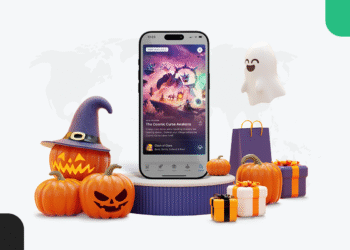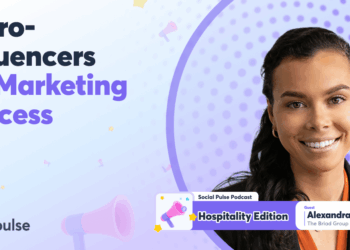If you’re running user acquisition for a mobile game in 2025, you already know the drill; CPIs are rising, privacy changes have reshaped targeting, and the days of relying on a single “hero” channel are long gone.
The good news? Growth is still possible. The studios winning today are the ones diversifying, blending traditional ad networks with new, privacy-friendly, and performance-driven channels that reach players in more meaningful ways.
This guide will walk you through how to build a diverse UA mix, starting with the foundations and moving toward innovative solutions like rewarded UA and programmatic DSPs that can future-proof your strategy.
Why Diversification Matters More Than Ever
In a market where nearly 70% of total app installs come from paid sources, relying on one or two channels is risky. Each network, whether it’s Meta, Google, or TikTok, has its own algorithmic biases, creative norms, and audience overlaps.
A diversified UA strategy spreads risk, expands reach, and ensures your campaigns aren’t at the mercy of a single platform’s performance fluctuations or policy changes.
Beyond that, diversification improves incrementality, reaching users you wouldn’t have acquired through other channels. The result? A stronger, more stable growth engine.
Start With the Foundation: Traditional UA Channels Still Work
Before experimenting with new channels, it’s essential to get your fundamentals right. The mainstay networks still drive massive volume and learning opportunities when used strategically.
Meta Ads (Facebook & Instagram)
Meta remains a powerhouse for mobile game UA thanks to its unparalleled audience reach and creative flexibility. Its Advantage+ App Campaigns have made it easier to automate targeting and bidding while optimizing for install and in-app events.
What works now:
- UGC-style and TikTok-inspired creatives are outperforming polished studio assets.
- Focus on broad targeting — Meta’s algorithm does the heavy lifting post-IDFA.
- Rotate creatives frequently to prevent fatigue and maintain CTRs.
Challenges: Rising CPMs and limited visibility into user-level performance mean you can’t rely solely on Meta for predictable scale.
Google App Campaigns
Google’s strength lies in its cross-platform ecosystem (Search, YouTube, Play Store, and Display) allowing you to reach players across discovery, engagement, and reactivation stages. One telling metric: many advertisers report that Google App Campaigns make up a large share of their ad-spend “wallet” especially among those spending less (e.g. under US$250K/month), with estimates from benchmarks putting them in the ~34-37% share of spend among such advertisers.
Tips for optimizing Google App Campaigns:
- Segment by monetization model (IAP vs. IAA) to help the algorithm learn faster.
- Use value-based bidding to prioritize high-LTV players.
- Leverage YouTube Shorts and video assets for upper-funnel awareness.
While automation helps scale quickly, remember that Google’s “black box” approach limits transparency. Complement it with channels where you have more granular control.
Unity Ads (and IronSource)
For gaming-specific audiences, Unity and IronSource remain go-to partners. Their ad placements — especially rewarded video and interstitials — give you direct access to players already engaged with similar titles.
Best practices:
- Test rewarded and interstitial formats together; rewarded often drives better retention.
- Use segmentation by genre — e.g., puzzle vs. shooter players behave differently.
- Track engagement post-install to identify high-quality publishers.
Unity’s strength is contextual targeting — something that’s becoming increasingly valuable in the privacy-first era.
The Shift: Why You Need Alternative UA Channels
Even if your campaigns perform well on Meta or Google, overdependence is dangerous. Algorithms fluctuate, costs spike, and audiences overlap.
Moreover, post-IDFA signal loss has made it harder to find new, high-intent players through traditional targeting methods. That’s why more studios are embracing alternative UA channels — ones that focus on user engagement, value exchange, or data-driven optimization.
Rewarded models, programmatic DSPs, and OEM placements are no longer “experimental.” They’re the new growth engines.
(According to Sensor Tower’s State of Mobile 2025 report, rewarded ads now account for over 27% of total gaming ad impressions — a 40% YoY increase.)
Alternative Growth Channels That Deliver
Rewarded UA: Value-Exchange That Drives Quality Installs
Rewarded UA, including Rewarded Playtime and offerwall-based models, lets users earn in-game currency or perks by playtime or task completion. Unlike traditional ad impressions, these users actively choose to engage, making them more invested and more likely to stay.
Why it works:
- Players try your game willingly, not passively.
- You pay for real engagement (e.g., playtime or level completion), not just installs.
- High retention and LTV, especially for casual and mid-core titles.
AppSamurai’s Rewarded Playtime connects developers with players who want to discover new games and get rewarded for playing them longer. This model aligns perfectly with both user intent and advertiser KPIs, driving longer sessions and better monetization outcomes.
Rewarded UA bridges the gap between performance and player experience, something traditional UA channels can’t always deliver.
Check out how Gram Games achieved 40% D1 retention rate with Rewarded Playtime!
Programmatic DSPs: Scale with Precision
Once you’ve tapped into engagement-based channels, it’s time to add programmatic advertising to your mix. A Demand-Side Platform (DSP) lets you buy ad inventory across thousands of publishers in real time, using data, context, and algorithms to find your ideal players. eMarketer forecasts programmatic will account for nearly 9 out of 10 digital display ad dollars worldwide in 2025, which means DSP-driven buying is how most buyers scale efficiently and access diverse inventory beyond single networks. That matters for studios who want both scale and control.
Why DSPs matter:
- You can optimize for specific KPIs like ROAS, retention, or LTV.
- You gain visibility into performance across multiple ad exchanges.
- Programmatic gives you access to audiences beyond walled gardens.
The best part? DSPs can run branding, UA, and retargeting campaigns all under one roof. That means you can re-engage dormant users or bring lapsed players back to your game, something that’s becoming increasingly important for long-term profitability.
AppSamurai DSP, for instance, offers full-funnel programmatic solutions, from awareness to reactivation, powered by machine learning and backed by transparency. It helps studios maintain steady growth while controlling efficiency.
Other Channels to Consider
OEM Channels and Pre-Installs
Preloading your app on devices (via OEM partnerships) can be especially effective in emerging markets. These campaigns build long-term visibility and help reach first-time smartphone users.
Connected TV (CTV)
Mobile games advertising on CTV is a rising trend. IAB’s 2025 video ad reports put digital video share of TV/video ad spend near ~58% in 2025, and CTV is a growing channel for brand-led installs and large launches. For games with a big launch budget or brand story, CTV (with QR or deep-link activations) can extend reach beyond mobile-first channels.
It’s perfect for high-budget launches or brand storytelling. With interactive QR codes and cross-device measurement, studios can now track installs driven from TV screens.
How to Build the Right UA Mix
Think of your UA mix like an investment portfolio. You want a blend of stable performers and high-growth opportunities.
Here’s a sample structure many studios use:
- 40–50%: Traditional channels (Meta, Google, Unity)
- 25–30%: Programmatic DSPs
- 15–20%: Rewarded / engagement-based UA
- 5–10%: Experimental (CTV, OEM, influencer)
Tips for balancing and optimizing:
- Test one new channel at a time; isolate learnings before scaling.
- Use consistent creative frameworks to compare results fairly.
- Track incremental lift, not just installs, but true contribution to growth.
- Adjust budgets monthly based on cohort performance and market shifts.
A diverse UA mix doesn’t just spread risk, it also makes your acquisition strategy more resilient, adaptive, and data-driven.
Measuring Success Across Channels
When running campaigns across multiple platforms, success measurement becomes complex, but also more insightful.
Focus on three key metrics:
- Incrementality — How much unique growth each channel adds beyond organic or other paid campaigns.
- ROAS / LTV — Evaluate return based on lifetime player value, not day-one metrics.
- Engagement depth — Retention, session time, and purchase frequency are better indicators of player quality than installs alone.
Use probabilistic attribution or data-driven modeling to understand blended performance. And don’t forget creative analytics, the same asset may perform wildly differently on Meta vs. DSP.
Key Takeaways
In today’s fragmented ad landscape, there’s no single “winning” UA channel. The real advantage lies in diversification, blending tried-and-true networks with new, engagement-driven and data-optimized solutions.
- Meta and Google still form the foundation, but over-reliance limits your growth.
- Rewarded UA adds quality and engagement, turning installs into long-term players.
- Programmatic DSPs bring transparency, scale, and KPI-based optimization.
- Emerging channels like OEM and CTV help future-proof your strategy.
The goal isn’t to abandon traditional UA, it’s to expand it. Build a portfolio that balances reach, engagement, and efficiency.
And if you’re ready to start, AppSamurai’s Rewarded Playtime and DSP solutions can help you scale intelligently, connecting your game with real players who stick around and spend.
















